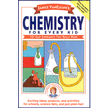 Smoothies are examples of mixtures. So what is a mixture? Easy! Two or more things in the same container. Now that was easy science. Now let’s build on this foundation.
Smoothies are examples of mixtures. So what is a mixture? Easy! Two or more things in the same container. Now that was easy science. Now let’s build on this foundation.
If the mixture is blended thoroughly, it is still a mixture? If you are only mixing stuff together and there is no chemical reaction, then YEP! you have a mixture even if it is thoroughly blended. If you can think of an example where this is not true, please let me know. I discovered that no matter how much I study science, I still make mistakes. But, I have also discovered that it is so easy for me to correct my errors on this website. So I hope we can be a team and learn science together by sharing ideas.
OK, now back to the science of smoothies.
What kind of mixture is a smoothie? It is exactly the same throughout–by this I mean that I can see and even feel tiny pieces of ice, which is a solid, and of course there is a liquid. In the photo, a smoothies is being made with ice, strawberries, milk, and a sweetener. I can predict that the sweetener dissolves in the milk but what about the strawberries and ice? Let’s find out more about mixtures. My best guess–oops! What ever am I saying. Scientists don’t guess, instead they form a hypothesis, which is their educated opinion about something. OK!! Its an educated GUESS! But saying, “My Hypothesis is that a smoothie is a heterogeneous suspension,” sounds more like I know what I am talking about than saying, “UUM! If I were to guess, I’d say that smoothies are heterogeneous solutions.”
So What do you think?
There are four types of mixture
1. heterogeneous (not the same throughout)
suspension –will separate if you allow them to stand undisturbed.
oil and vinegar
sand and water
pasteurized milk = water based colloid + fat globules
vinaigrette salad dressing==vinegar + oil + seasonings
2. homogeneous (the same throughout)
solution–has one phase with particles being microscopic:
salt water = water molecules + sodium ions + chloride ions
sugar water= water molecules + sugar molecules
vinegar = acetic acid + water
3. colloid–smaller particles than in a suspension but larger than in a solution. Has two phases evenly mixed– but they do not separate upon standing.
whipped cream –liquid phase (cream) + gas phase (air)
homogenized milk –liquid phase (water solution) + fat globules (broken into such small particles that they no longer separate when the milk is allowed to stand. This happens by straining the milk through very tiny holes.
4. Composite materials: Different materials that are stuck together, such as rocks, wood,
 |
Chemistry For Every Kid |